The topic Expressions in Brick is about the expression of the materials in their purest form. The materials respond to the site and its contours, the climate, the context, and the social setup. It also respects the traditional architecture of the place. More importantly, the construction techniques make it cost-effective and thus economically viable. The architect has the free will (to an extent based on clientele requirements and budget) to choose the material he desires. One can source it from anywhere creating any expression. The expression can be of power, authority, or a statement through the built edifices. When the architect chooses to renounce this power and turns himself into a humble craftsman trying to understand the language of the material, the material starts communicating to you weaving magic. This is the true Materiality in Architectural Design. The Centre for Development Studies in Trivandrum by Architect Laurie Baker is a testimony to the same creation “Expressions in Brick”.
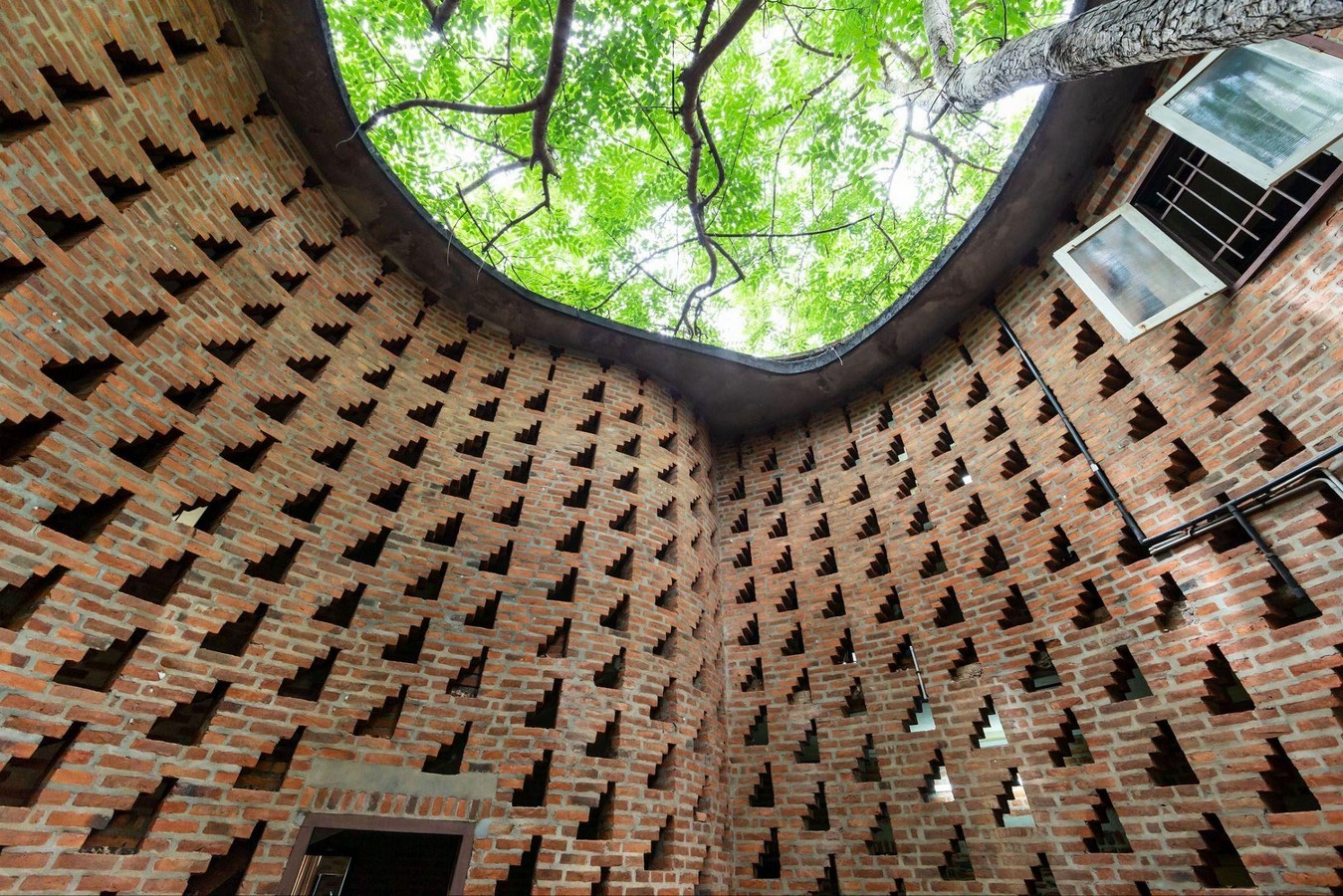
The Centre for Development Studies
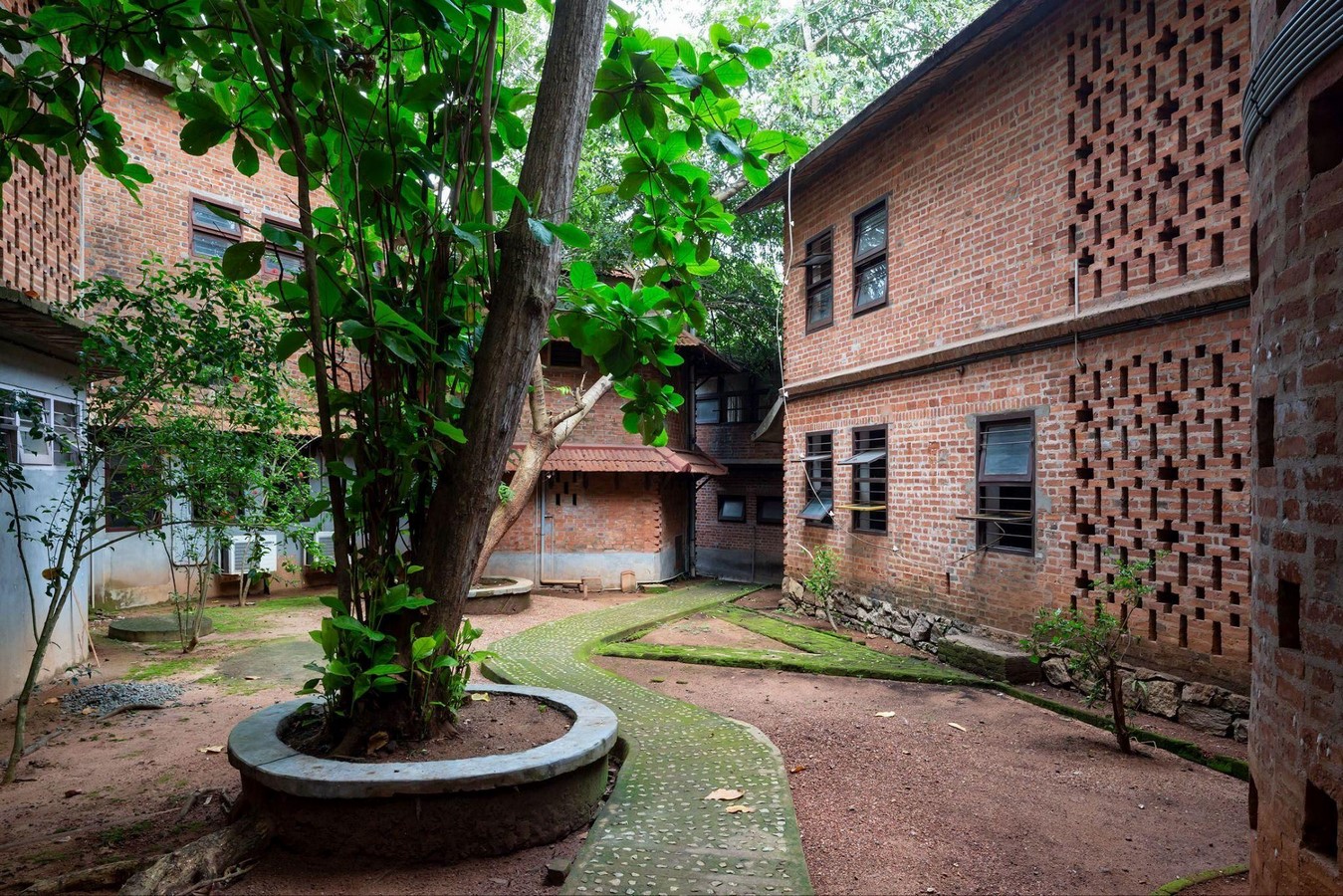
Juhani Pallasmaa in his book “The Thinking Hand” writes, “As we construct our self-made world, we construct projections and metaphors of our mindscapes”. The Center for Development Studies (CDS) is the metaphor for Baker’s mindscape. Located atop a hillock in the picturesque landscape of Trivandrum City, the CDS is one of the seminal projects of Ar. Laurie Baker. The work started in 1970, in the capital city of Kerala in the southernmost part of India. The project grew organically on the site over thirty-eight years.
In 1970, the vision for a new research center started to blossom under the leadership of the then Chief Minister Shri. C. Achyuta Menon. Noted economist and professor K.N Raj was the guiding light behind the vision of the CDS. The institute started as a research centre for social sciences supporting the development of the state. This idea resonated well with Baker’s quest for an alternative approach to architecture. The vision started to materialize in the nine-acre hillock.
Baker had the opportunity to spend sixteen years of his life in the Pitogarh district in the Himalayas. Over time, he acquainted himself with the vernacular construction techniques. When he settled in Trivandrum, he imbibed the principles of the local construction methods. He then applied them to suit the current context. He created different patterns to suit the varied typology of buildings and clientele. He also evolved cost-effective construction techniques. The designs varied according to the client’s specific needs, even though the patterns remained constant. Through these patterns evolved Baker’s style of architecture.
The Site
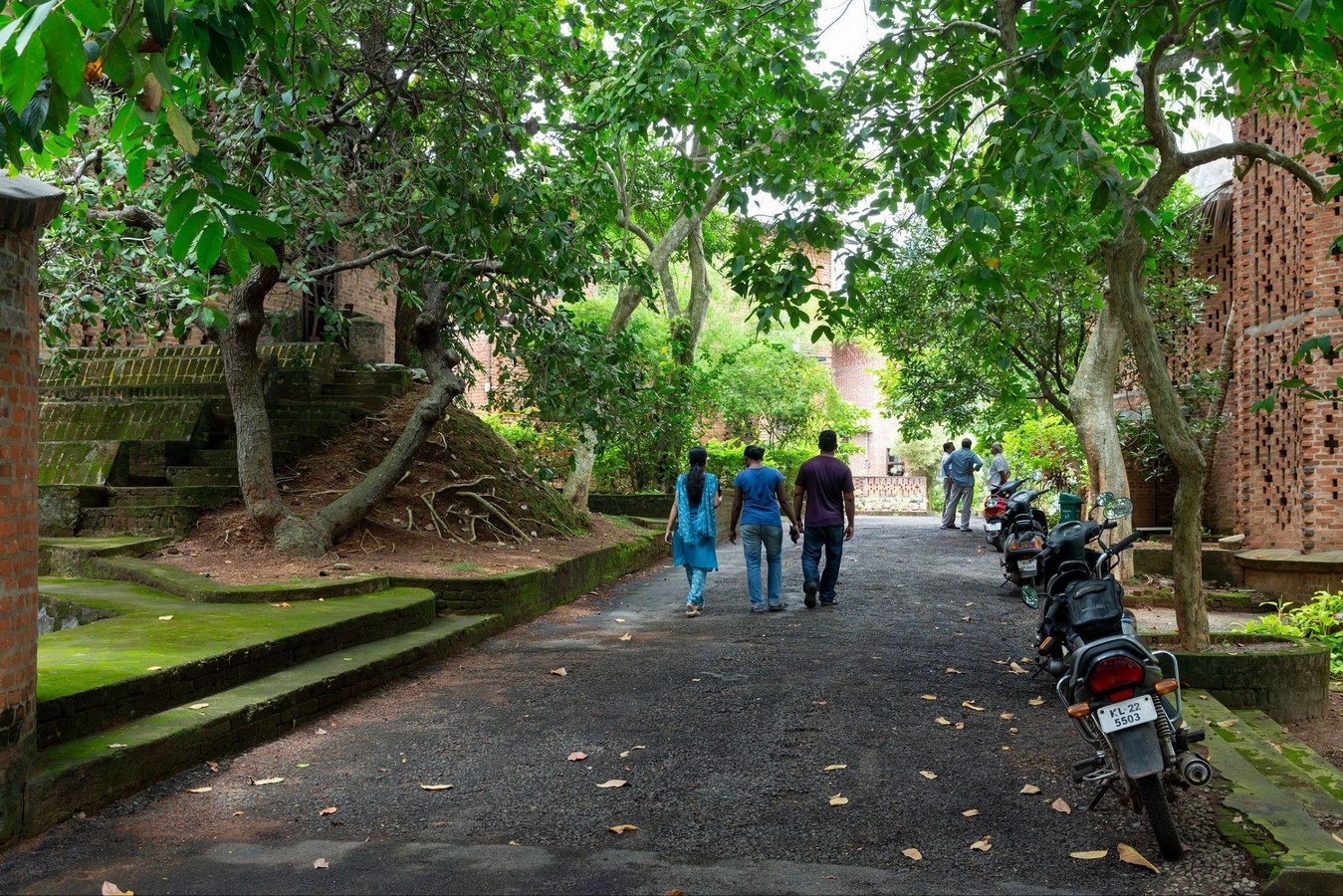
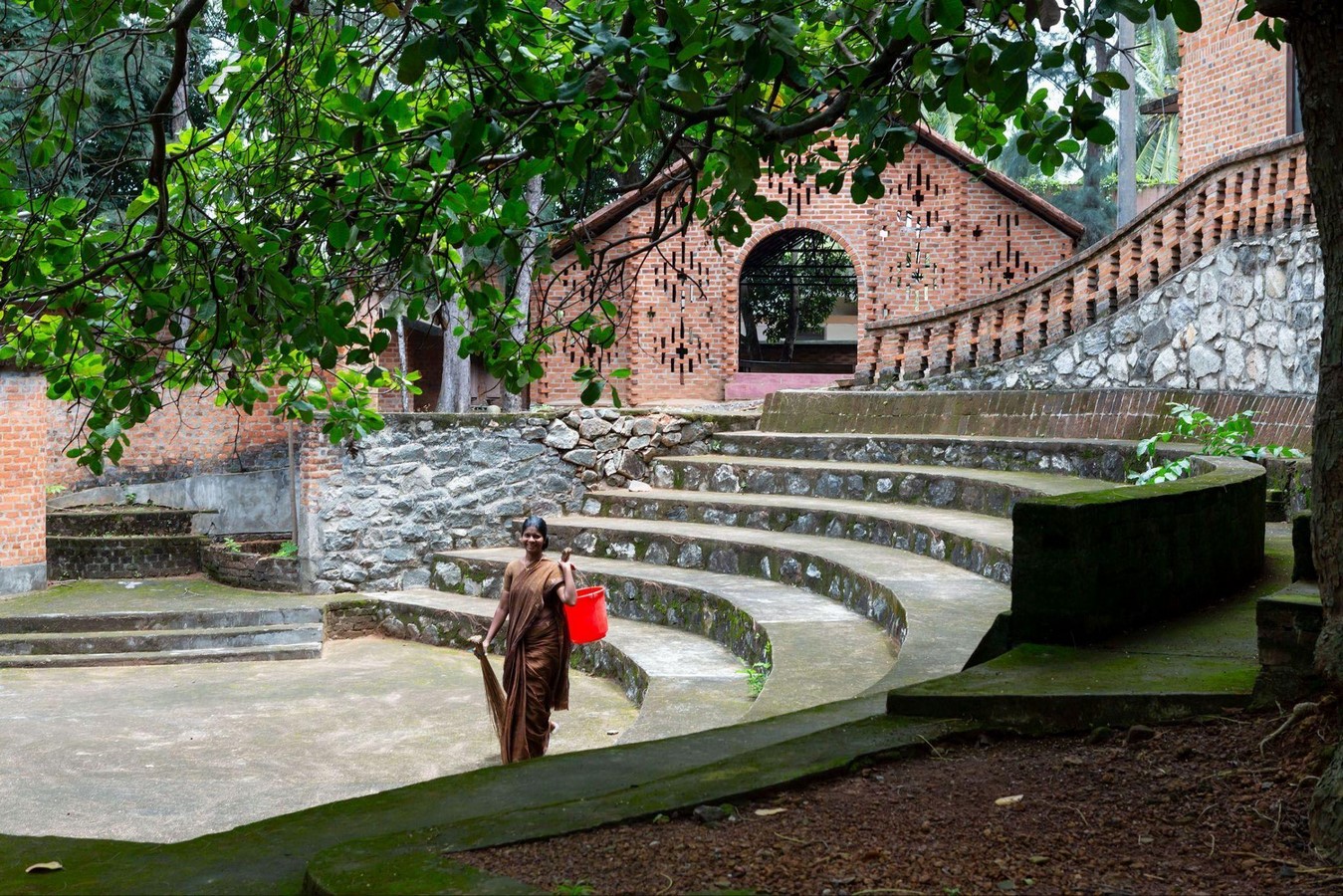
A small house initially served as the administrative center. The Centre houses the library building at the highest point on the site which was first built. Adjoining are the administrative center and the computer center. As one climbs down the hillock, the open-air theatre, the clubhouse, and the research center come into view. Further down the hillock are the hostels, the canteen, the guest house, and the residences. The topography of the site was rarely disturbed. The vehicular pathways were along the smaller slopes. The pedestrian pathways followed the steep contours. The random rubble along with a mixture of lime, sand, and cement from the site turned into the footings. The rocky terrain itself acted as the foundation.
Materiality and Form
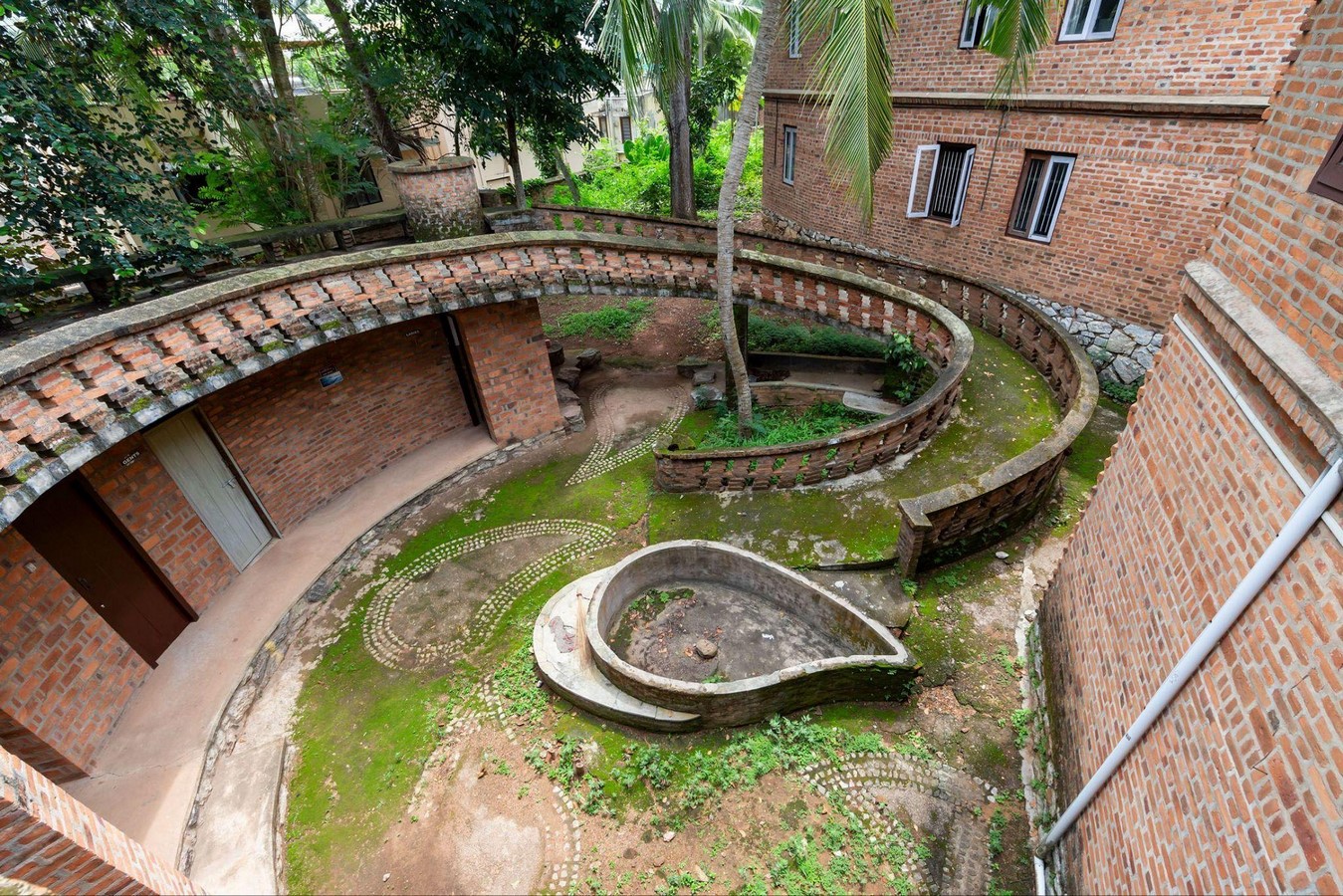
“The straight line is rare but the curve is frequently seen, “writes Baker in one of the unpublished writings in the book on Laurie Baker, Life Works and writings by Gautam Bhatia. The one line in the book completely encapsulates the built form at CDS. His ideology led to the development of several construction techniques. The structural nuances in brick made them cost-effective as compared to the conventional methods of construction.
Through the construction techniques, emerged exciting patterns. He asserts that the perimeter wall of a circular space is shorter than a square or a rectangle enclosing the same area. A mix of curved and straight walls emerged through the rat trap bond. The slender jaali walls gave privacy and ventilation. The double walls protected the interior from the heat.
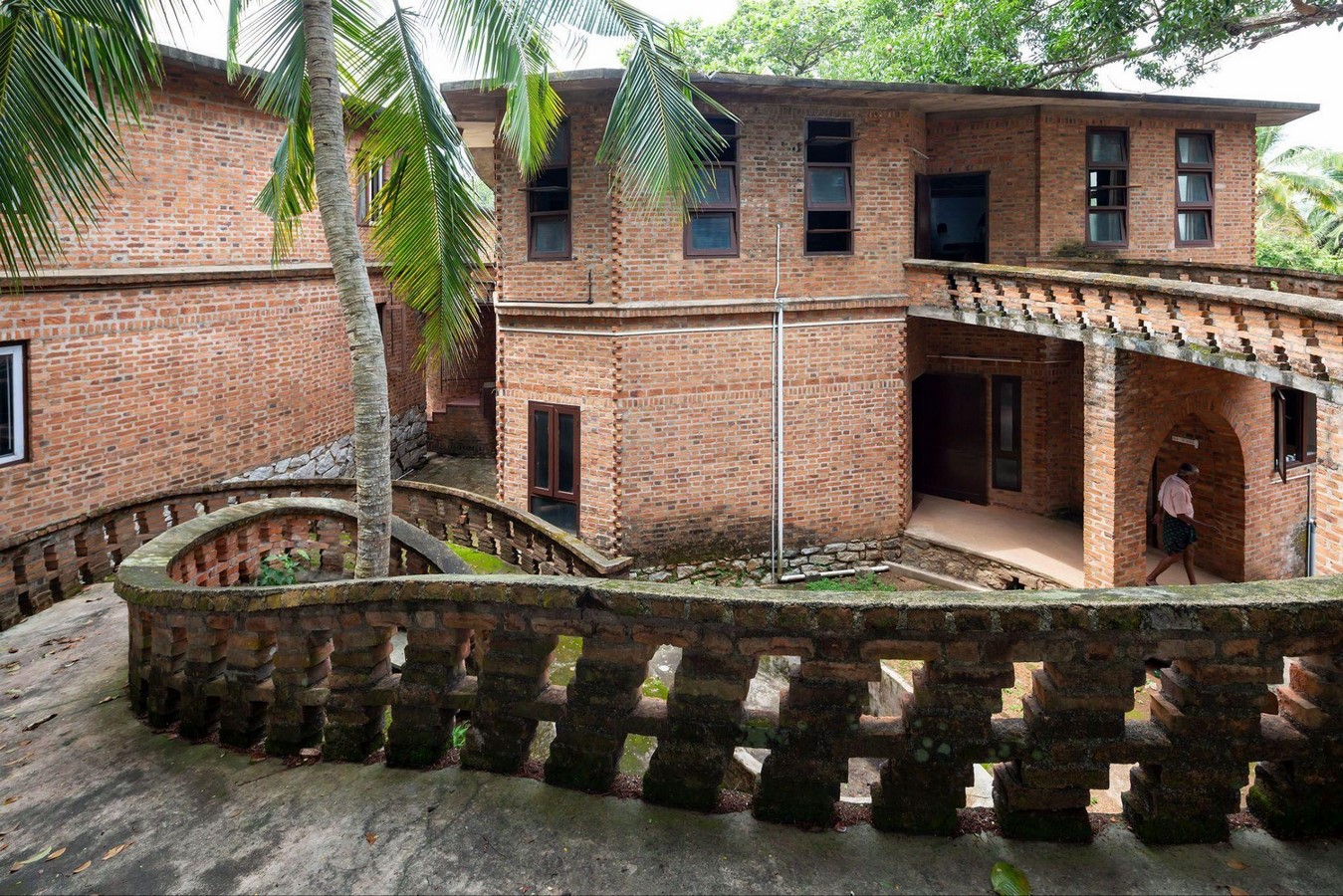
The corbelled and the stepped arches added to the stability but reduced the amount of concrete. The pitched roofs with filler slabs, the brick lintels, and finishing techniques added to the charm of the built form. These patterns manifest themselves as creative expressions through the hands of the craftsmen (the skilled laborers specialized in the task) using the building material, i.e. brick. An issue of concern though is the availability of these craftsmen and the high labor charges.
Materiality and Skin
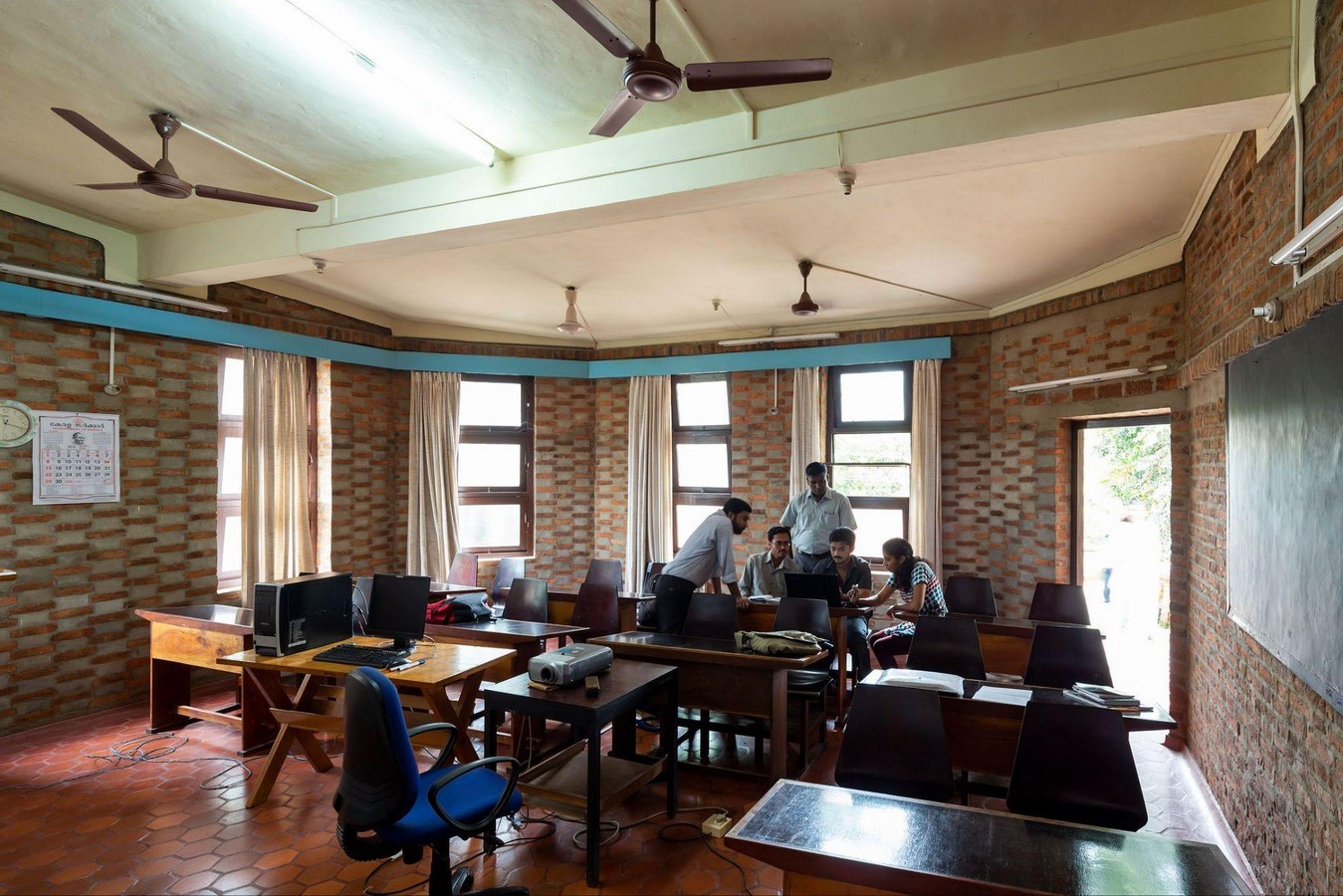
The skin is what gives the structure its materiality as well as what lies behind the materiality. The inherent quality of the space emerges through the skin of the structure. It blurs the thresholds of materiality into the realms of immateriality. The building skin is a direct response to the climate of the place. The city of Trivandrum; nestled between the Arabian Sea and the Western Ghats has a warm humid climate. Summers have intense solar radiation during the daytime. The relative humidity touches 100% apart from the winter months. The two monsoons; the southwest monsoon and the northeast monsoon bring heavy rainfall to the region. Strong winds go with the heavy rains.
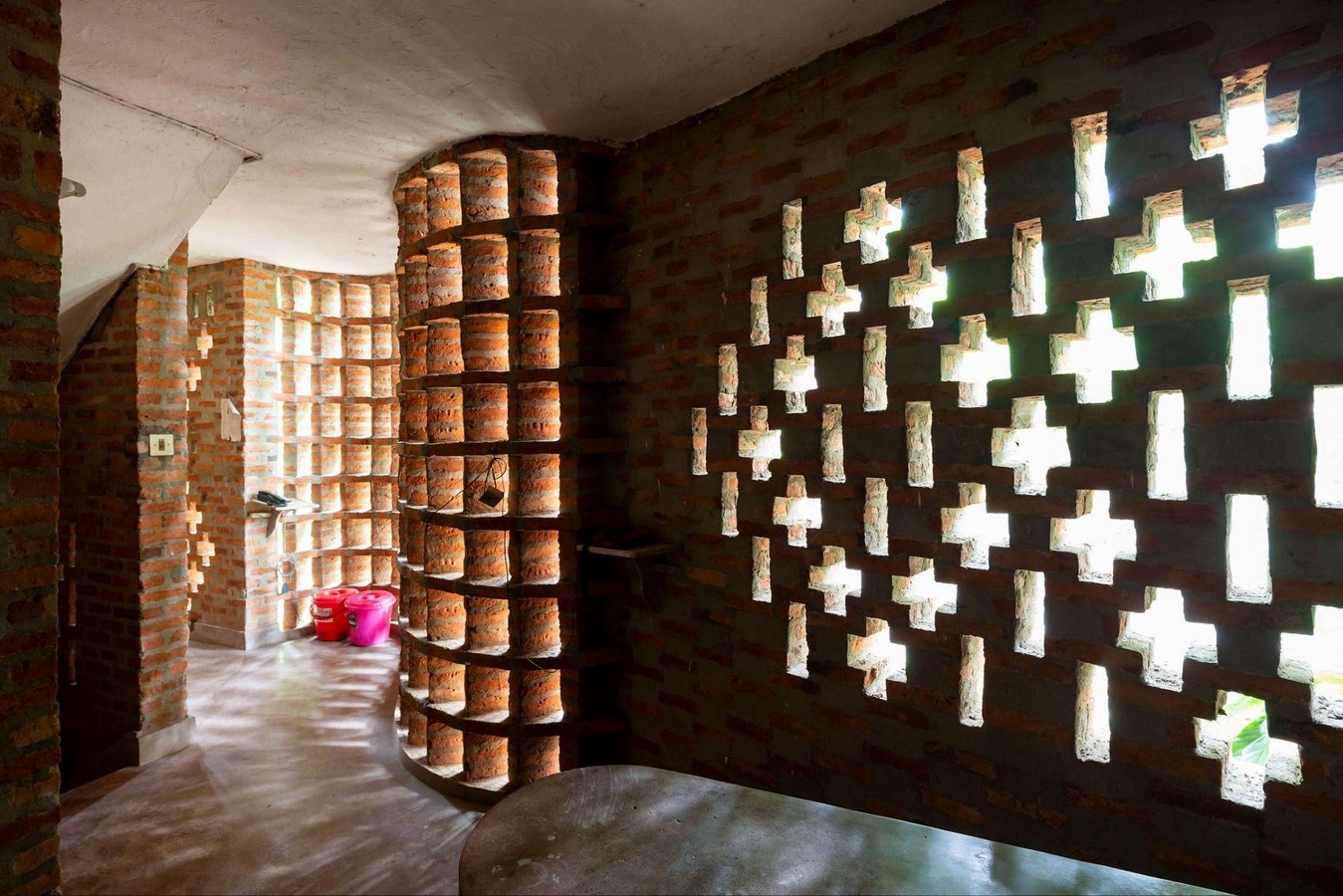
The walls of the rat trap bond have a hollow cavity in the middle which acts as insulation against the harsh rays of the sun. The corridors and the lobby spaces have slender walls in varying jaali patterns. The double wall construction in the Computer Center keeps the space insulated. The inner wall of the rat trap bond and the outer wall of the slender jaalis provide a gap between the two. The slender jaali wall keeps the heat out but lets in the filtered sunlight and the cool breeze. The openings are either double-hung or triple-hung sash windows where the user can adjust the sashes according to the sun and the wind. The pitched roof with the overhangs keeps the rain out and also protects the wall. The inside of the roof with the filler slab roof construction keeps the heat away.
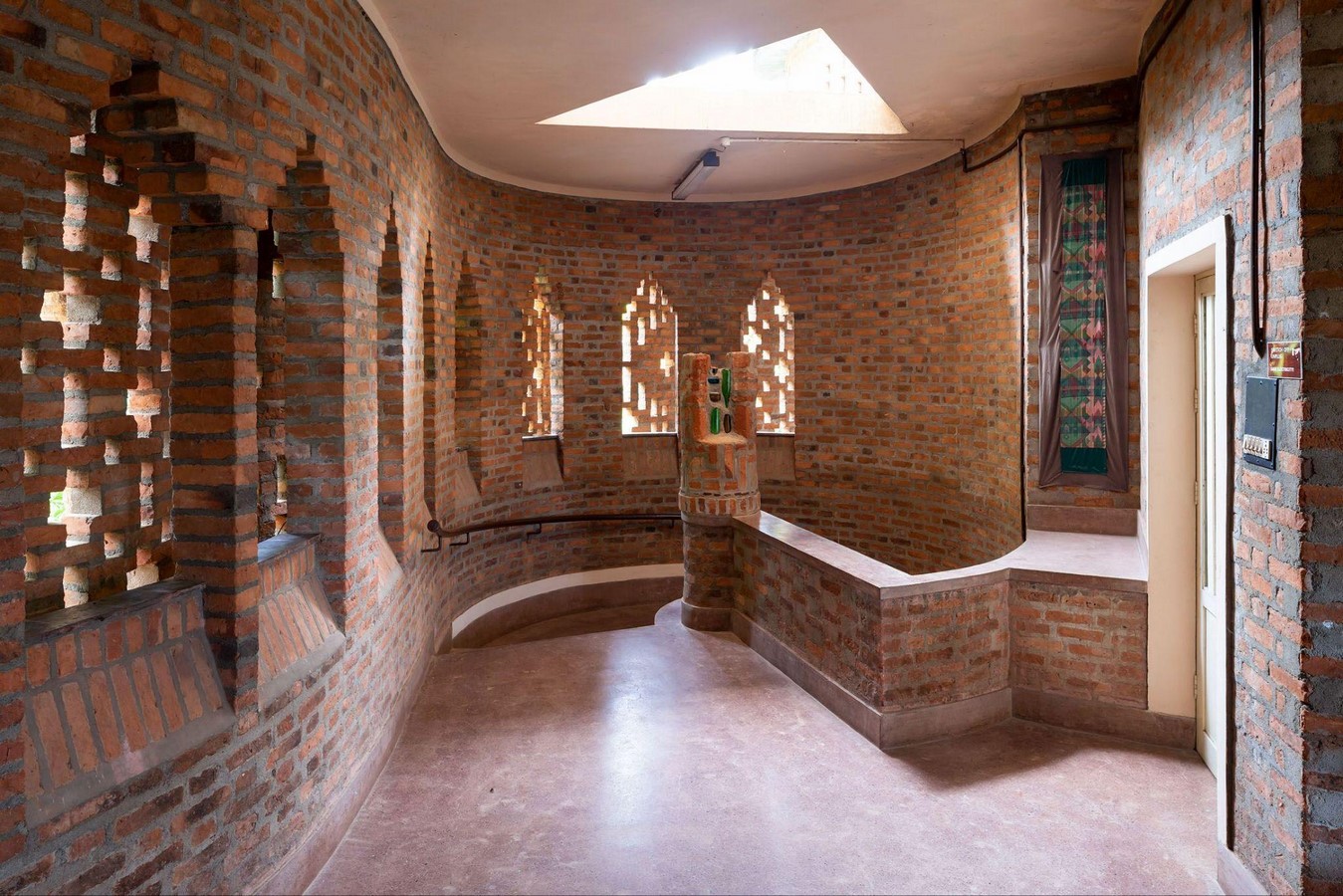
The gable allows for the escape of the hot air and also lets in reflected sunlight avoiding glare. The amount of light entering the building is just enough. Sometimes it leads to the usage of lights in the corridors during the overclouded days. The breezeways and the right amount of filtered light make the interiors thermally comfortable. The compromise becomes a very wise decision by the architect.

If one or two typical modern buildings from each country could be transported and put down in isolation in a large flat desert, could any of us even architects, walk from one building to another and say ‘ Ah! A modern Fijian masterpiece ’and…….’ My! This is obviously an Indian effort! writes Baker in one of the essays ”Is a Modern Indian Architecture Possible” in the book on Laurie Baker, life works and writings by Gautam Bhatia. This makes us pause and think; are we heading in the right direction? Could there be an Indian identity?
India has a diverse cultural, geographical, and climatic variation. Through the materiality of the structure, one can revitalize the assumption of the term modern. Here, the usage of appropriate materials speaks its language and the craftsman can understand the language. At the CDS, one can see the work of the craftsman in collaboration with his material. It blends into the site organically creating a beautiful identity. It reflects and respects the traditions, but is also relevant to the present and a lesson for the future.
Reference
- Pallasmaa, Juhani. (2009) The Thinking Hand: Existential and Embodied Wisdom in Architecture. John Wiley & Sons.
- Bhatia, Gautam.(1994) Laurie Baker. Penguin Books India.





















